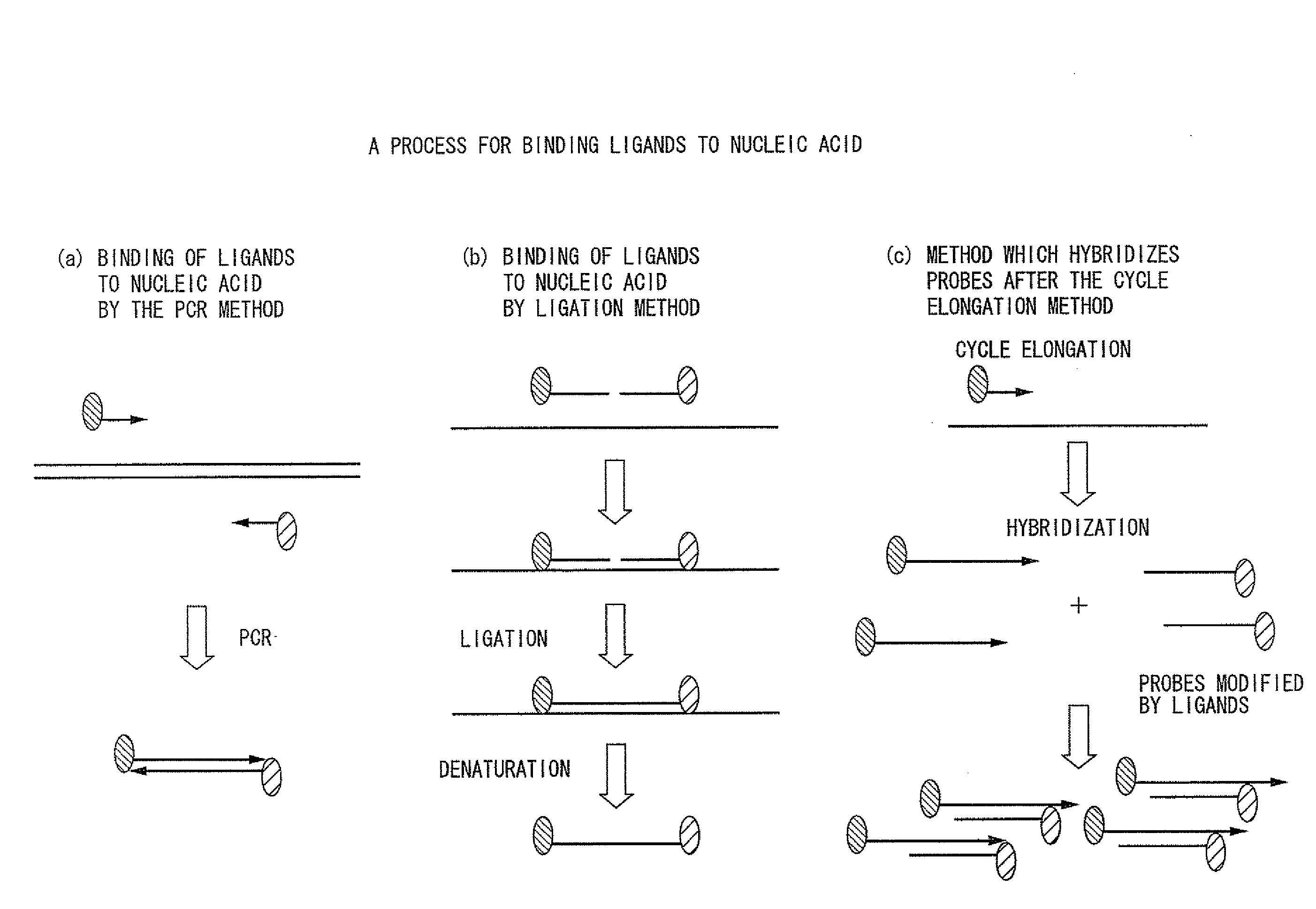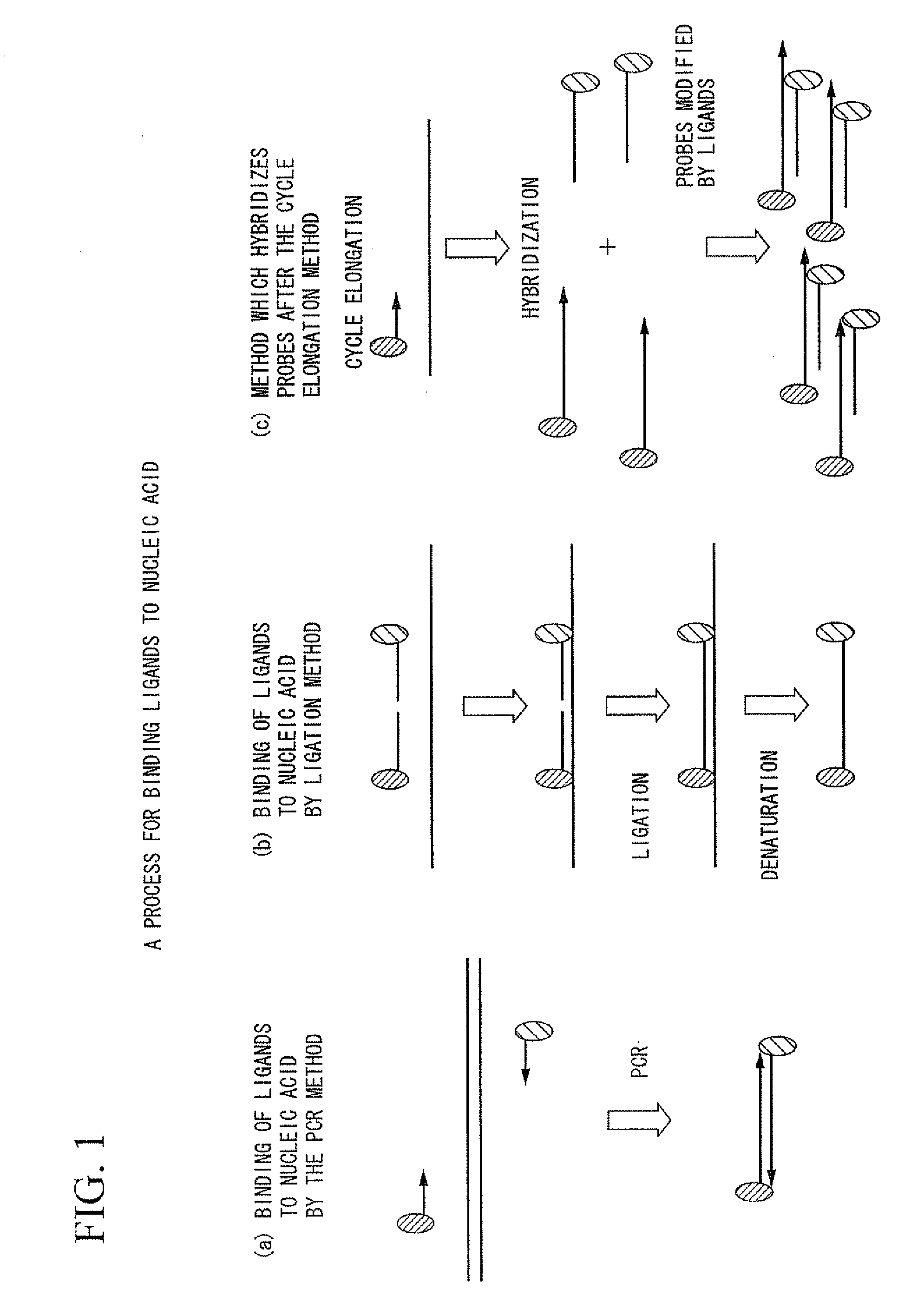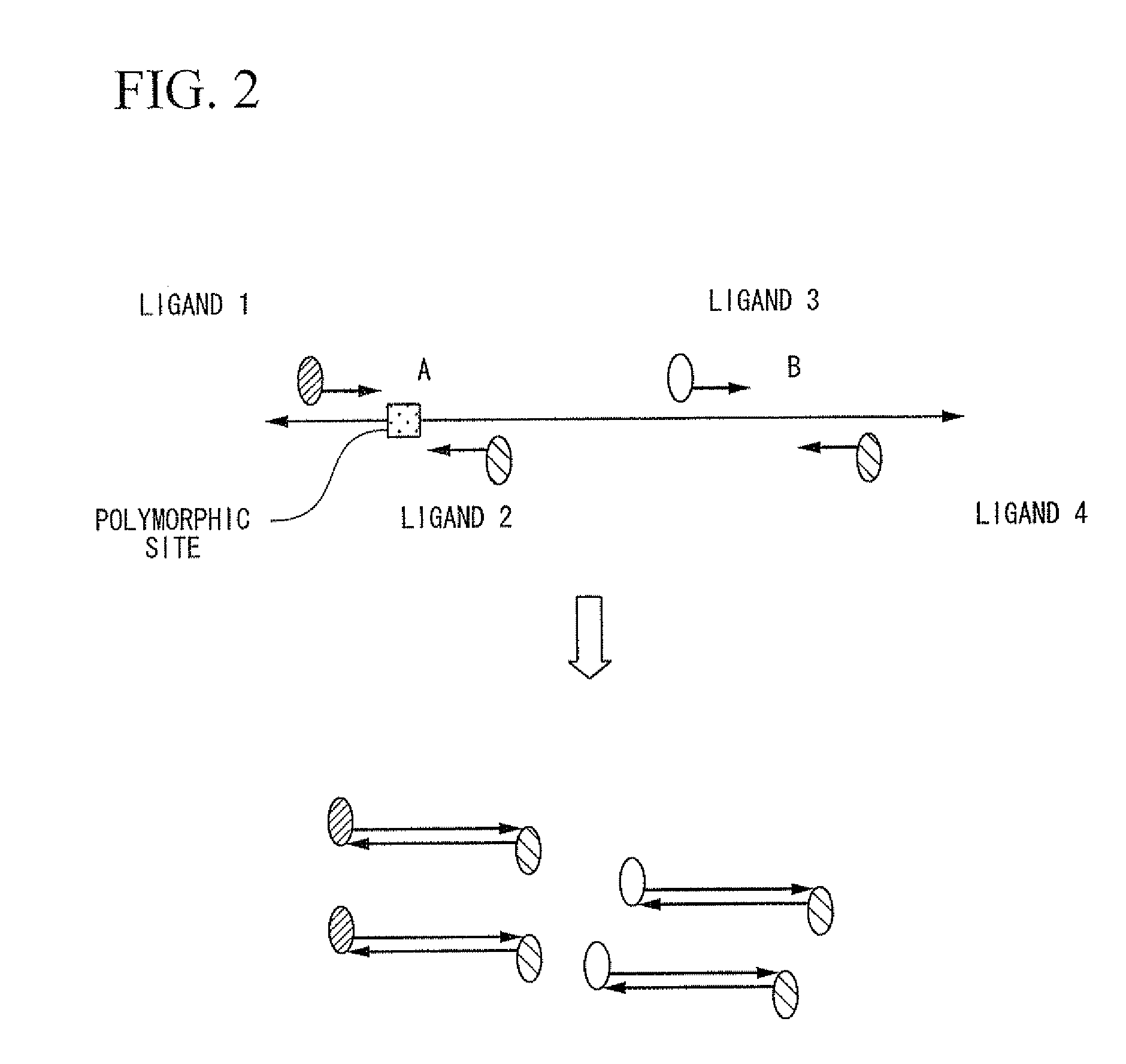Method of analysis of primary structural change of nucleic acid
a nucleic acid and primary structural technology, applied in the field of primary structural change analysis of nucleic acid, can solve the problems of chromosomal structure anomaly, and achieve the effects of high specificity, excellent quantifiability and high sensitivity
- Summary
- Abstract
- Description
- Claims
- Application Information
AI Technical Summary
Benefits of technology
Problems solved by technology
Method used
Image
Examples
example 1
1. Reagent Preparation
[0197]The following reagents were prepared.
[0198]Sample 1 / reference nucleic acid solution 1: a sample containing sequences represented by Seq. ID No. 5 and Seq. ID No. 6 at 2 nM each, which is a sample possessing a normal type of chromosomal structure.
[0199]Sample 2 / subject nucleic acid solution 2: a sample containing 2 nM of a sequence represented by Seq. ID No. 5 and 1 nM of a sequence represented by Seq. ID No. 6, which is a sample possessing an abnormal type of chromosomal structure in which LOH occurs in the region of Seq. ID No. 6.[0200]PCR reagent: “Accuprime Super Mix II” manufactured by Invitrogen Co., catalog No. 12341-012.[0201]PCR primer: combination of the primers shown below.[0202]Primer wherein the 5′ terminal of a primer a expressed by Seq. ID No. 1 is modified by FITC[0203]Primer wherein the 5′ terminal of a primer b expressed by Seq. ID No. 2 is modified by biotin[0204]Primer wherein the 5′ terminal of a primer c expressed by Seq. ID No. 3 is ...
example 2
[0217]Nucleic acid containing a single nucleotide polymorphism was detected by ligation reaction. Before conducting ligation reaction, in order to exclude similar sequences and enhance detection sensitivity, samples possessing nucleotide sequences of 80 bp and 85 bp were made on the assumption that the nucleotide sequences around the aforementioned single nucleotide polymorphic site is later subjected to amplification by the multiplex PCR method. Particles endowed with magnetism were used in the carrier, and sequences were detected by enzyme substrate reaction. When template DNA exists in sufficient quantity and when it is possible to conduct direct detection of ligation, conduct of direct detection without performing amplification by the PCR method enables more accurate reflection of the abundance ratio of nucleic acid.
[0218]1. Reagent Preparation
[0219]The following reagents were prepared.
[0220]Sample 1: a sample containing sequences represented by Seq. ID No. 7 and Seq. ID No. 8 a...
example 3
[0242]Detection of the nucleic acid used in Example 1 was conducted by using dispersive microparticles and measuring agglutination of the pertinent microparticles.
[0243]1. Reagent Preparation
[0244]The following reagents were prepared.
[0245]Sample 1 and sample 2 of Example 1
[0246]PCR reagent: “Accuprime Super Mix II” manufactured by Invitrogen Co., catalog No. 12341-012.
[0247]PCR primer: combination of the primers shown below.[0248]Primer wherein the 5′ terminal of a primer a expressed by Seq. ID No. 1 is modified by hapten a expressed by Seq. ID No. 14[0249]Primer wherein the 5′ terminal of a primer b expressed by Seq. ID No. 2 is modified by hapten c expressed by Seq. ID No. 16[0250]Primer wherein the 5′ terminal of a primer c expressed by Seq. ID No. 3 is modified by hapten b expressed by Seq. ID No. 15[0251]Primer wherein the 5′ terminal of a primer d expressed by Seq. ID No. 4 is modified by hapten c expressed by Seq. ID No. 16
[0252]The standard sequence was amplified by primers...
PUM
| Property | Measurement | Unit |
|---|---|---|
| particle size | aaaaa | aaaaa |
| particle size | aaaaa | aaaaa |
| OD | aaaaa | aaaaa |
Abstract
Description
Claims
Application Information
 Login to View More
Login to View More - R&D
- Intellectual Property
- Life Sciences
- Materials
- Tech Scout
- Unparalleled Data Quality
- Higher Quality Content
- 60% Fewer Hallucinations
Browse by: Latest US Patents, China's latest patents, Technical Efficacy Thesaurus, Application Domain, Technology Topic, Popular Technical Reports.
© 2025 PatSnap. All rights reserved.Legal|Privacy policy|Modern Slavery Act Transparency Statement|Sitemap|About US| Contact US: help@patsnap.com



